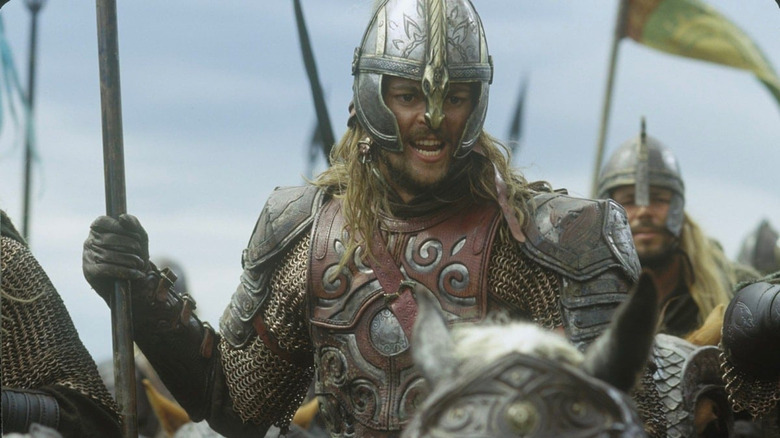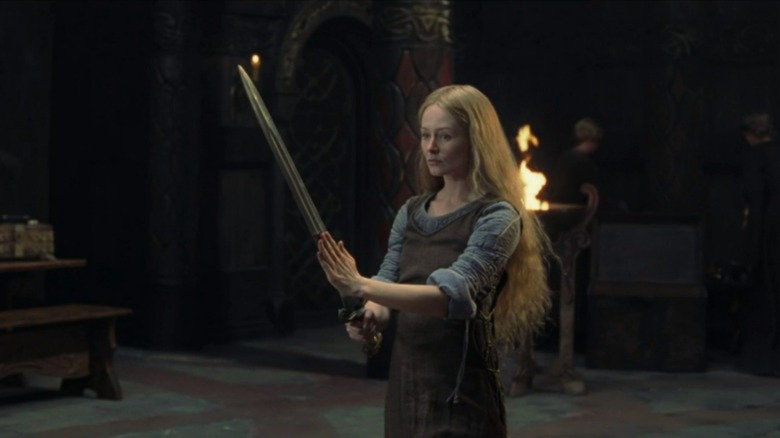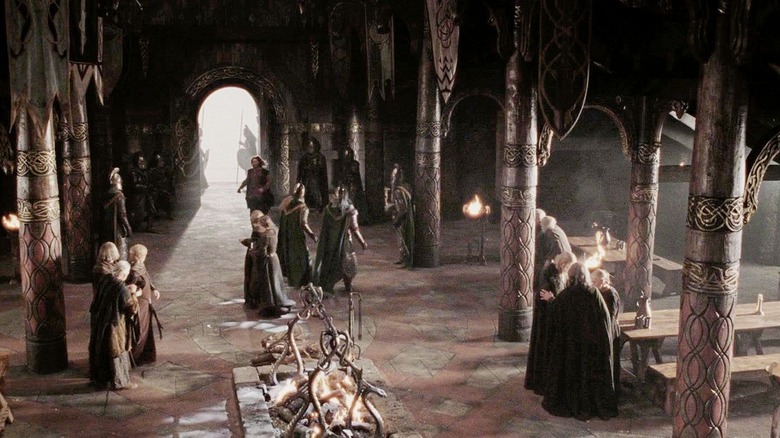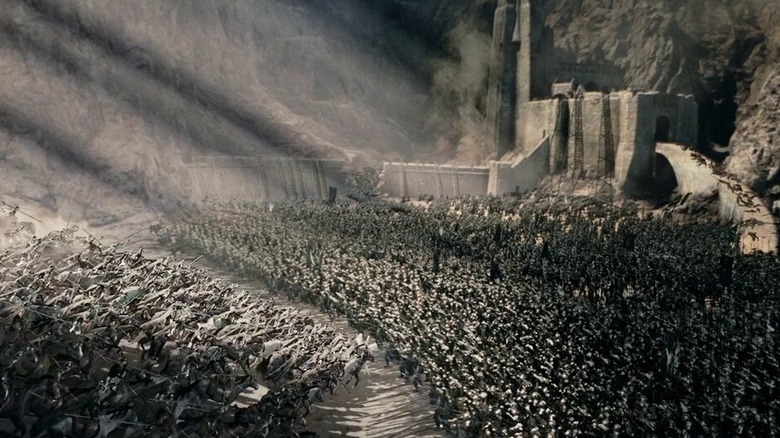The Lord Of The Rings: The War Of Rohirrim Gives Us Middle-Earth Anime, And We Can't Wait [Annecy 2023]
One of the most anticipated animated movies of 2024 feels like a throwback to the early '00s, because it is all about Middle-earth. From the moment it was announced we were getting a "Lord of the Rings" anime film about the battle that gave Helm's Deep its name, it quickly became a must-see film. Now, thanks to a first look panel at the 2023 Annecy International Animation Film Festival, the wait for the release of "The Lord of the Rings: The War of the Rohirrim" on April 12, 2024, is all the more difficult, because this movie looks incredible.
Executive producers Jason DeMarco and Philippa Boyens, as well as director Kenji Kamiyama ("Ghost in the Shell: Stand Alone Complex," "Eden of the East") and producer Joseph Chou, took the stage, with Boyens talking about how the idea for a "Lord of the Rings" animated movie has been in talks for years. For Boyens, finding the right visual style was key, since the film required something realistic that wouldn't feel uncanny when compared to the live-action films. Eventually, the idea of an anime film stuck.
After that, it was all about finding the right story, one that was more than just a side story in between the movies. "We're not dictated by the ring or by Sauron's shadow, but it very much exists in this world," Boyens said, teasing that "The War of the Rohirrim" won't ignore the central part of the Third Age of Middle-earth, even if it isn't a direct part of the story.
The actual story, then, draws (like much of recent Tolkien adaptations) from the appendices, specifically three key paragraphs in Appendix A, which tell the story of the royal House of Eorl that ruled Roham. "It's not just about war, but about the wreckage of war," Boyens teased.
'Everyone else dies!'
In the appendices, we learn of Helm Hammerhand and his children, Háma and Haleth, and his daughter, who is actually unnamed by Tolkien. That daughter, here named Hèra, is the protagonist of "The War of the Rohirrim." When asked why they chose her to lead the story, Boyens replied, "Everyone else dies!" And before you start complaining, this is already in the text, and also the story takes place centuries before the movies.
Who is Hèra? For one, Boyens was quick to point out they didn't want her to just be a warrior princess. Instead, they took inspiration from real history, like Tolkien often did, with Æthelflæd, Lady of the Mercians and daughter of Wessex king Alfred the Great serving as inspiration for Hèra. Æthelflæd ruled Mercia during the time of Viking invasions of England and played a key role in the conquest of the Danelaw territory held by Danes.
Director Kenji Kamiyama described Hèra as tomboy-ish, a young woman who is wild and vulnerable, with a character arc that sees her grow in a time of war — because you can't really have a Middle-earth story without war. The main conflict here is between King Helm (voiced by Brian Cox) and a Dunlending with Rohirric blood named Freca, who says he has a claim to the throne. According to Boyens, both men think with their muscles, and Freca's proposal of marrying his son to Helm's daughter is the inciting incident that begins the titular war.
Centering the film around Hèra is smart, because of how little we know of her. As we hear in the opening narration, "Do not look for her in old songs, for there are none."
Forth, Eorlingas!
Kamiyama emphasized the work that went into designing the characters, with the goal being to attain as much realism as possible while still being recognizably anime. One key character is Wulf, one of the main antagonists. According to Kamiyama, the first unanimous response from the female staff regarding Wulf was to make him hot. "He's going to be doing pretty bad things, so he better be someone beautiful."
The result, based on concept art and two short scenes shown on the panel, is less "Record of Lodoss War" and Ralph Bakshi and more, well, Peter Jackson's movies — but in anime form. This applies to the characters, who look very detailed and realistic, while still cartoonish enough to suspend disbelief, and also the many locations known to fans of the live-action movies.
Indeed, this film feels to be cut from the same cloth as the original "Lord of the Rings" trilogy from designs by John Howe and some key WETA artists, to even using old models from the WETA archives for inspiration, to Stephen Gallagher (who worked on "The Hobbit") channeling Howard Shore — there are lots of horns and ominous choirs, and the main Rohan theme plays to rousing effect). Among the concept art shown, we see familiar locations like Edoras, Hornburg, and Isengard, seemingly a battle camp for the Dunlendings — nothing good ever happens in Isengard.
Pure Middle-earth magic
In the first clip shown, we see the opening of the film, which includes a classic Middle-earth narration, this time by Miranda Otto's Éowyn. We watch Hèra ride a horse to the top of a hill and feed a giant eagle. Later, another clip shows the politics at play in Edoras, with a lord of Rohan wanting to erase the history of a group of female warriors and banner women to the king, a prelude of things to come.
Though we were not shown many battle scenes, a final tease at the end of the panel gave a quick overview of what to expect, like battles including oliphants, plenty of arms being chopped off, and lots and lots of horses. This last part quickly proved to be one of the bigger challenges for the animation team. As any animator would tell you, drawing a horse, let alone animating one, is incredibly hard, and Rohan is all about horses.
For animation nerds, this looks fantastic, with Kamiyama and producer Joseph Chou explaining that although the movie is animated in 2D, many techniques and styles went into the making of "The War of the Rohirrim." For one, the team had actors do motion-capture performances of the characters for the entire film, before creating models of the scenes in real-time gaming engines like Unreal to work out camera angles and movements to create the 2D animation. Kamiyama was clear in his intention not to do rotoscope, and instead had clear instructions for his animators to interpret and translate the mo-cap as a reference for the 2D animation.
The result looks fluid, but not uncanny, with realistic and grounded movements and character acting, but clearly the work of animators.



